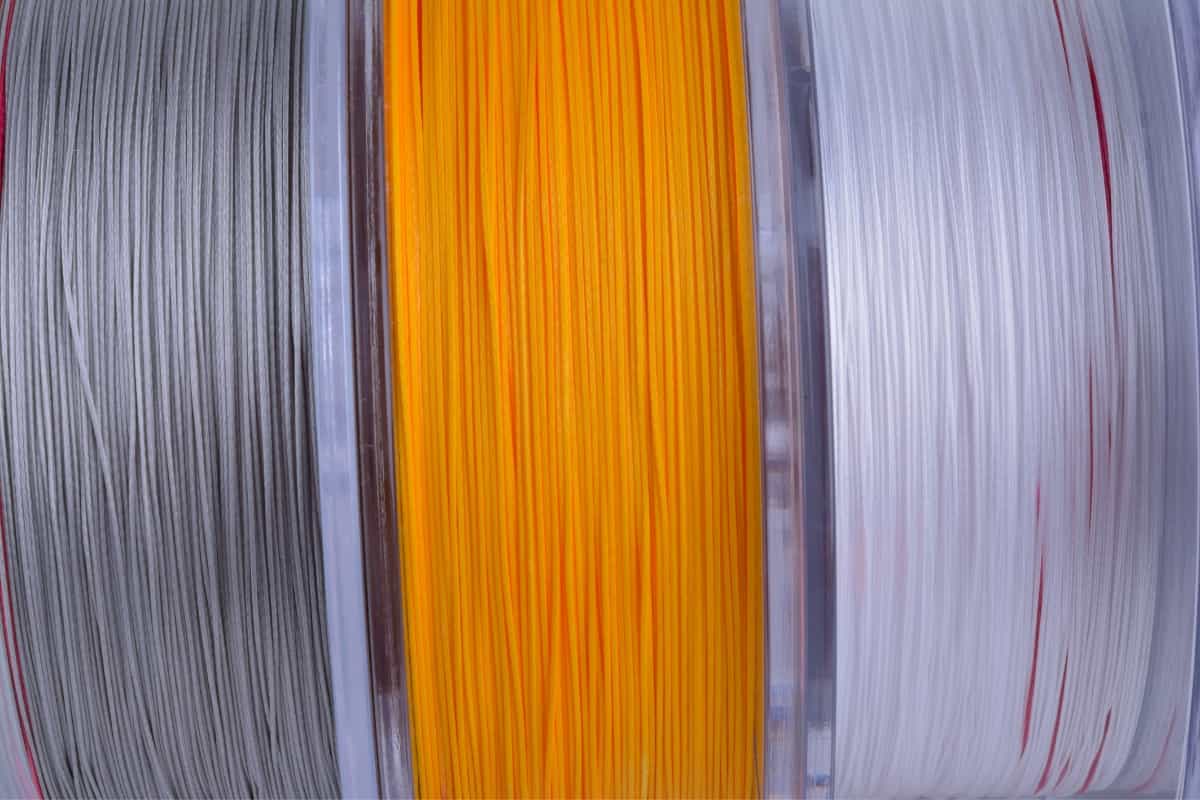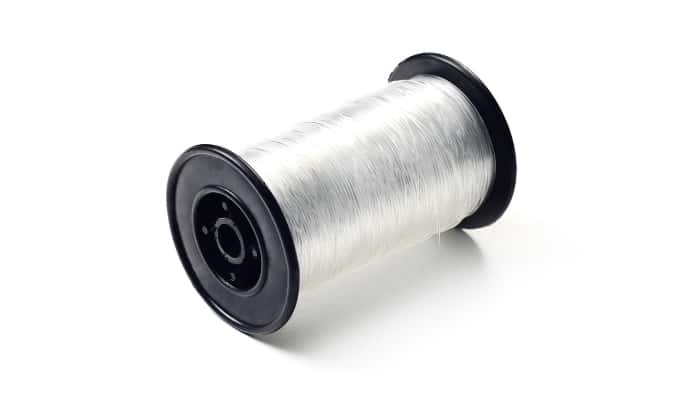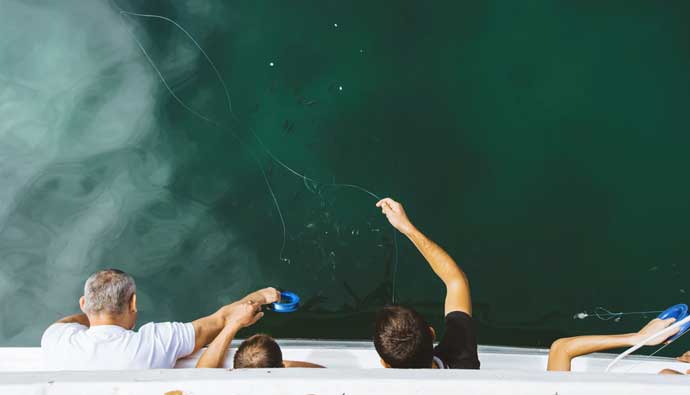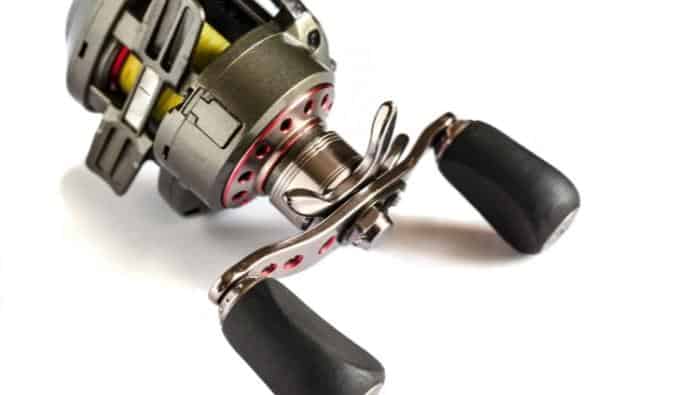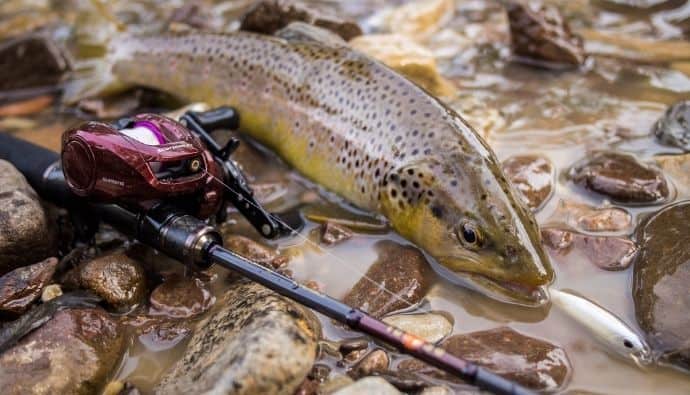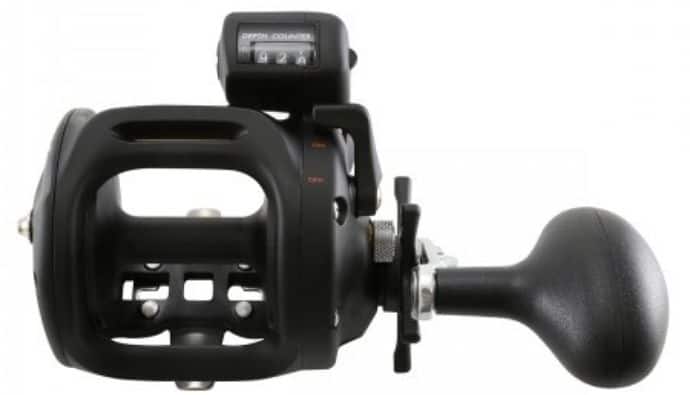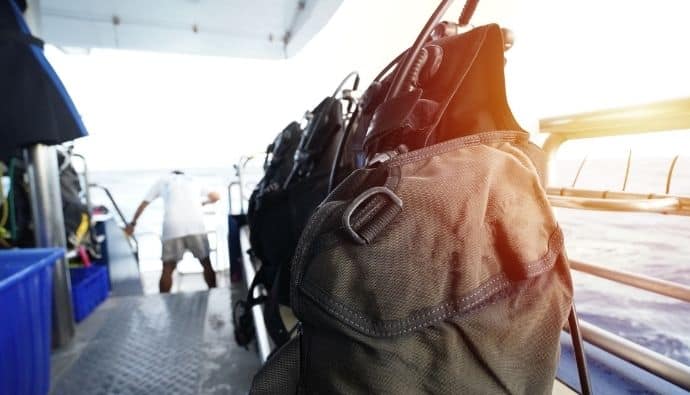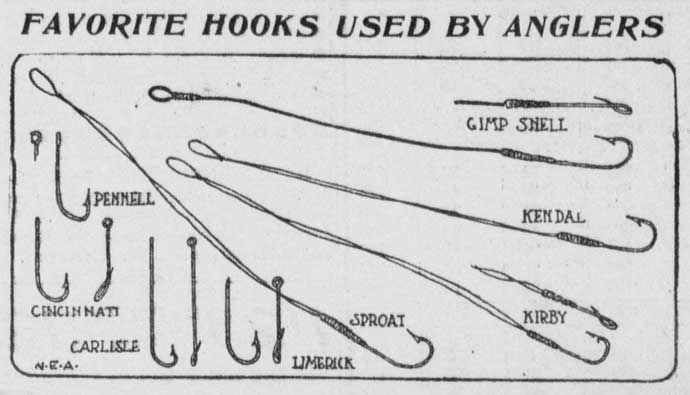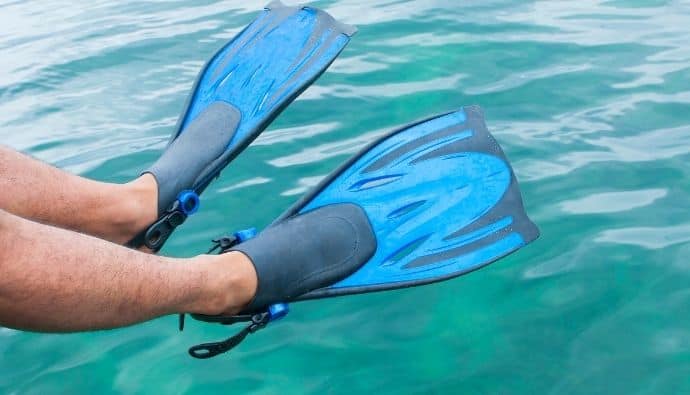Until recently, the braided line was foreign to me.
I grew up on standard mono with a fluoro leader and didn’t think much of it…
But before we go too far into my history of fishing lines, here are our recommendations on the best braided fishing lines for what will work best on your reel.
3 Best Braided Fishing Lines for 2023 Reviews
- Best Overall – PowerPro Spectra
- Editor’s Choice – KastKing SuperPower Braid
- Best Value – Berkley Fireline
1. PowerPro Spectra
PowerPro (moss green) has been a big deal in the fishing industry lately, and for a good reason. Their spectra braided line is super strong and near bulletproof for a great price.
Some say that PowerPro is expensive, but most anglers who’ve lost the prize fish know that one area not to skimp on is your line. Having talked with captains of boats, they still relive the nightmares that come with getting the big one almost to the boat only to have the cheap line break.
Talk about heartbreak!
Many anglers start with PowerPro Moss Green, then venture out to test the others but, for some reason, continually come back to it. If you have the budget, get a bit of spool of this stuff, and it’ll last you a long time.
2. KastKing SuperPower Braid
If PowerPro is outside your budget, KastKing is another one of the best braided fishing lines. Their line is strong, with abrasion resistance, and anglers brag about their ability to tie knots well with the line.
The line has a low memory which helps you cast further and lower the chance of wind knots.
If you’re new to braided fishing lines and want to try it out before you break the bank, try KastKing. The price is right, the strength is true to the rating, and you’ll get a super smooth cast.
3. Berkley Fireline
If you have the money to spend and want to get the strongest and most abrasion-resistant line, you should get Fireline.
It has an excellent round profile which makes casting a breeze. The crystal is not as clear as fluorocarbon, but it does help make your braid less visible in clear water.
You’ll get a quality braid with Fireline, but don’t expect too much more than the PowerPro. If you’ve used PowerPro and want to try something a bit different and enjoy more casting distance or try a new brand, then give Fireline a test.
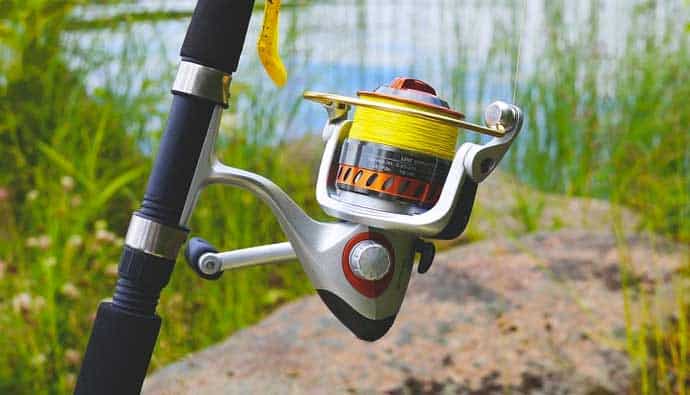
When fishing on a boat, it’s nice to have a high viz line to tell if braided fishing lines will cross or tangle easily.
Then again, surf fishing for croaker and perch on the mean shores of Southern California doesn’t take an insane line to bring in.
But as I started getting better at surf fishing and even jumping on my buddy’s boat, it was clear that the braided line had some serious advantages over mono.
- Extra cast distance
- Better bite detection
- Stronger
- Less tackle loss
- Stronger knots
And the list goes on…
Braids will never be as cheap as monofilament lines based on how intense the manufacturing process is; however, it’s come down significantly in cost in recent years.
If the price of a full spool of braid scares you, there are two options I recommend:
- Buy in bulk from Amazon. If you get 1500 yards, you’ll save a bunch of money in the long run since the braid is robust and can be stored for a long time.
- You can backload or front load your spool with a certain amount of braid and use mono to fill it up. This is a common practice that benefits both types of lines in one reel.
Let’s dive into the workings of the braided fishing line so you can ask your local shop what to do with more confidence, or better yet, buy some and load up your fishing line spooler at home!
What is a Braided Fishing Line?

A braided fishing line is made from high molecular weight polyethylene, the same synthetic made from milk jugs and bulletproof vests.
To make the braid that goes on your spool, many micro-fibers are braided together into a tight cord. A maypole braiding machine takes the many fibers and keeps them at an even tension as it’s braided together quickly.
As the machines spin, it weaves the strands into a tight braid…it takes quite a while…
While the braided line is being produced, a worker takes hot water and mixes it with the dye. A pump at the bottom keeps the water moving to distribute the dye evenly.
They then heat and pressurize the dye into spools of fishing lines to make a nice, even color.
Sometimes the braided line is then run through a silicon resin, making it abrasion-resistant. It will be less likely to break when dragged against a rough surface like a rock. It’s then run through an oven to cure the resin.
The line is run through an abrasive eyelet which removes line contaminants and makes the line smooth.
Finally, the finished line is packaged on various-length spools, packaged, and shipped to places where you can buy it.
It takes 17 days to braid, color, and spool braided fishing line…No wonder it’s a tad pricey. It’s worth it, though!
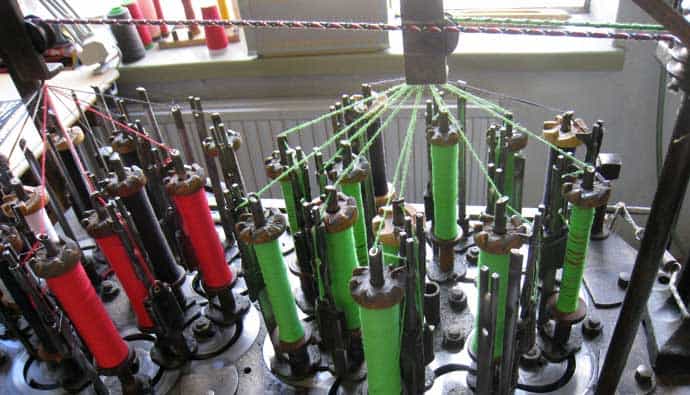
How Many Strands Should My Braided Lines Be?
As we mentioned earlier, the braided line is made from High Molecular Polyethylene Fibers (HMPE). These are formed from tiny polyethylene microfilaments that make a carrier, combined to make the braided line.
These braided fishing lines come in different carrier sizes, like four, eight, or nine. This is the number of carrier lines that are braided together to make the different types of braided lines.
Four Strand Braided Lines
This strand braided line is grand for grassy areas where you only need a smooth line. A smoother line tends to be quieter when you cast and smoother when you retrieve it.
You won’t hear the sawing sound over your guides. This will increase the longevity of your guides as well.
Having fewer hills and valleys on the line will cut down on the friction it takes to reel in. Some angler says that a higher braid line is more sensitive in the water, ideal for surf fishing.
The lower friction also helps with casting further, so go for this line if you need to get a bit more distance.
Eight and Nine Strand Braided Lines
This strand braided line is great for grassy areas and places where you only need a smooth line. A smoother line tends to be quieter when you cast and smoother when you retrieve it.
You won’t hear the sawing sound over your guides. This will increase the longevity of your guides as well.
Having fewer hills and valleys on the line will cut down on the friction it takes to reel in. Some angler says that a higher braid line is more sensitive in the water, which is ideal for surf fishing.
The lower friction also helps with casting further, so if you need to get a bit more distance, go for this line.
Lower Count Vs. Higher Count Braided Lines
If you’re fishing in an area with many obstacles like wood or thick vegetation, go with the lower count braided line.
If you want to cast further, have a bit more finesse in the line, and have increased sensitivity to feel exactly when the fish bites, then go with a higher count braid.
How to Spool Braided Fishing Line
Spooling braid on a reel helps to back your spool with a monofilament line to help prevent any slippage from the braid when you’re fighting a bigger fish. You can also use electrical or nylon tape, whatever helps add friction to the braid at the base.
Backing with mono also helps you spend less money on the expensive braid since mono is usually cheaper. Since you’ll only be using around half your spool at any time, there isn’t a need to have your whole reel braid.
Tools you’ll need to get started:
- Mono
- Braid
- Scissors
- Damp towel
Steps for Spooling Braided Line on Your Reel
- Start with an open bail before you tie your mono knot on your spool. Use a double overhand knot and fasten it tightly on the spool.
- Flip the bail and start reeling at least mono through the guide to cover the entire spool. Go for at least one or two layers.
- Use your fingers to keep the line tight as you start spinning the reel.
- After covering the spool adequately, it’s time to cut the mono and tie it on the braided line. You can use a wide variety of knots, from a Yucatan knot, double uni, Palomar, or whatever knot you’re comfortable with. You want a low-profile knot so it doesn’t cause trouble on your spool.
- Remember to keep your spool of braid or mono on the table, unraveling counterclockwise with the label up. The reel should spin clockwise, and your spool should unravel counterclockwise.
- Since the braid is bumpy, use your rag to tighten the line when you reel in to fill your spool.
- Try to fill up your reel as close to the edge as possible with a braided line to help improve your casting distance. However, you’ll get annoying wind knots if you go too far. Try to stay ⅛ to 1/16 from the edge.
PRO TIP: On your first time using your newly braided reel, go on a boat and let the line drag out while the boat is moving about 100-200 feet to get any weird line twists out. Then just reel it in and attach your lure or bait, and you should be good to go.
How to Care For Your Braided Fishing Line?
The rule of thumb is the more big fish you catch, the quicker you will need to change out your line.
Not a bad problem to have!
It depends on how hard you pull on the line and how long you’ve had the line.
If you’re a competition angler, you’ll probably switch out your line at the end of each day. There’s no point risking losing a winning fish.
If you’re a recreational angler, you’ll use the same line for at least a week or, more likely, a few months, depending on if you keep the reel out of the sun and rinse it off after each use.
Be careful if you’re fishing in water with salt or sediment, as it’ll dry on your line guides and start to abrade your line faster than any fish, which will wear your line out. Always rinse your whole surf fishing rod and reel with fresh water after each use.
Suppose your guides are dirty clean them with a paper towel, your hand, or a shirt. At least clean your guides once a week.
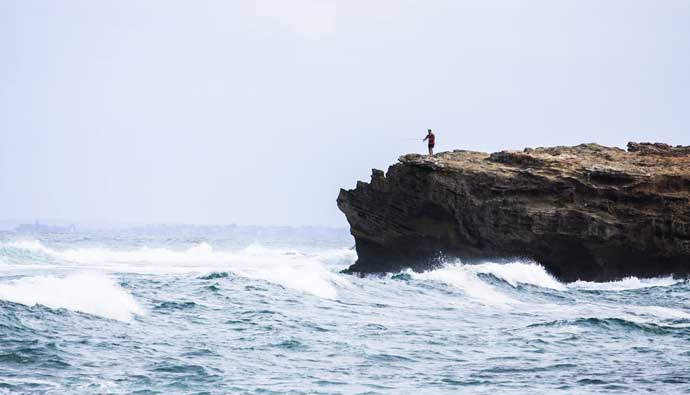
Braided Fishing Line Buyer’s Checklist
- What size fish are you going after?
- What pound line do you want? When in doubt, opt for 30lb and figure out if you’re going to go higher or lower the next time around.
- What number of strands do you want? Higher if you want more distance casting, lower if you’re going to fish in vegetation.
- What color do you want? If you’re on a boat, go high visibility yellow.
- What’s your price point? If you can, go for the highest quality line, as it’s a small price to pay for landing the prize fish and preventing your tackle from being lost.
Rules of Thumb for Picking Braid
A lot goes into picking the right line for your reel. I know we’ve covered most of the keys of what to consider, but if there are any remaining doubts, here’s an easy guide for helping you make your decision.
What is the Best Braided Line Test?
Go 30-pound braided line on your 3000 or similar reel when in doubt. Since the braid is thin, this pound braid will mimic the lower-strength mono line and help prevent any digging into your reel from heavy fish pressure.
You’ll be able to bring in nearly any size fish without your line breaking. Even if you have a considerable fish, you can just throw your drag out and let them run without worrying much. If you’re on the kayak, this added thickness will help you get the fish out of the water and into the boat.
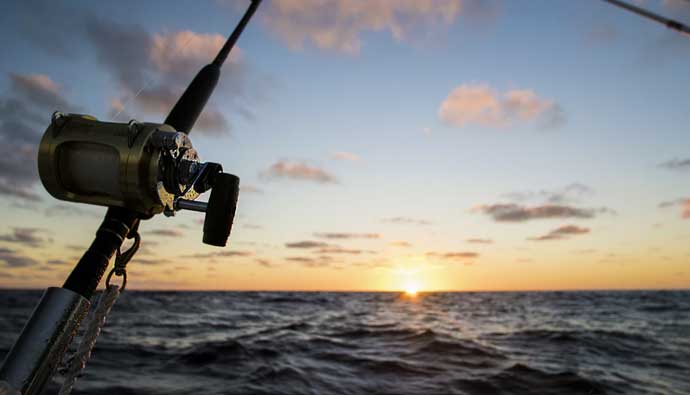
If you have an enormous reel, then go for a 50-pound test. Backfill your reel with 100 yards of mono and throw 300 yards of braid on top.
Since braid is expensive, you don’t need to fill your reel with it. You can even top shot with 60% mono and keep your braid below for when you need it if a fish runs on you. You can even backfill with mono and leave a 75-yard top shot of braid since that’s about all that will be used for bringing in most fish.
Get creative in your setup!
A 50-pound test will enable you to land shark, tuna, king mackerel, and whatever else you manage to hook up. Your drag will give out before your line does.
Between a 30 and 50-pound test for a braided line, you’ll be able to catch just about anything in the water without a second thought.
Frequently Asked Questions
The best-braided fishing line is a subjective answer, and it depends on the angler you ask. Most anglers I’ve talked to have mentioned PowerPro as their favorite braided fishing line. It’s reasonably priced and holds up nicely.
Braided line is made from High Molecular Polyethylene Fibers (HMPE). These are formed from tiny polyethylene microfilaments that make a carrier, combined to make the braided line. It takes nearly 17 days to produce a single braided line spool.
Go heavier test line on bait casters to prevent issues. Remember, a smaller diameter line on spinning and a large diameter on casting; it’s just that simple. Therefore, go 20, 30, or 50lb on your bait caster for the added thickness.
If you’re on a boat, go high visibility yellow; otherwise, go green.
High Molecular Polyethylene Fibers (HMPE).
We like PowerPro Spectra. When in doubt, go 30lb test.
Use a braided fishing line if you want a thinner line for casting far, added sensitivity due to low stretch, and the ability to cut through vegetation due to the rough surface of the line.
Braided line is slippery on metal so make sure you start any reel with mono, then tie on your braided line to give it grip. You can also use electrical tape on the metal spool and tie your braid for added friction.
If you compete, then change the line every day. Otherwise, for the average person, your line will last a few weeks to a few months before needing a change.





 Facebook
Facebook YouTube
YouTube